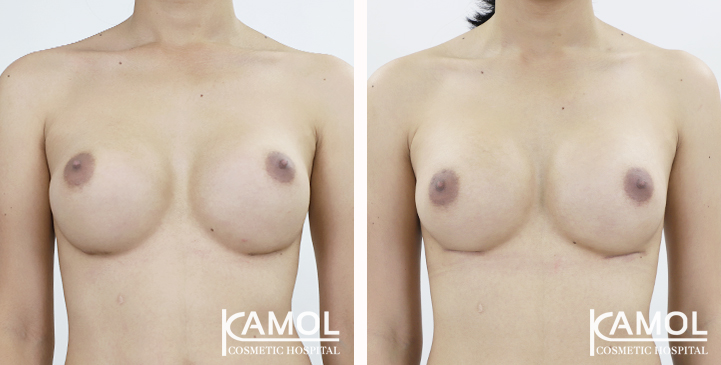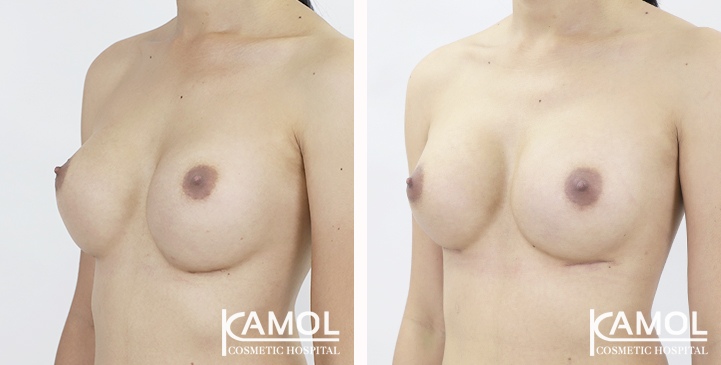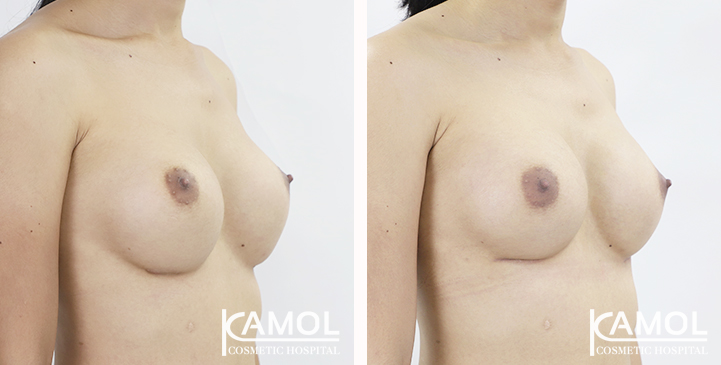Buttoming Out Breast Revision
"Bottoming out" is a complication that can occur after breast augmentation surgery, in which the implant drops too low on the chest, causing the nipple to appear too high on the breast and the lower portion of the implant to be visible. This can also cause the breast to appear flattened or elongated. Some common causes of bottoming out include:
- Weak or stretched tissue: The natural tissue that surrounds the implant can be stretched or weakened, causing the implant to drop downward.
- Overdissection of the inframammary fold (IMF): During surgery, the IMF (the crease beneath the breast) may be over-dissected, which can weaken the support and lead to bottoming out.
- Large or heavy implants: Using an implant that is too large or heavy for a patient's natural tissue can put extra stress on the tissue and lead to bottoming out.

These images show removing the previous implants and make a new pocket.
Treatment options for bottoming out include:
- Revising the IMF: The IMF can be tightened, which can help lift the breast and reposition the implant.
- Adding a breast sling: A sling or hammock-like device can be placed under the breast to provide additional support and lift the breast.
- Changing the implant: Smaller, lighter implant can be used or a different type of implant can be used, such as a gummy bear implant which have a more defined shape and structure.
- Removing the implant: In some cases, removing the implant may be the best option.
It is important to consult with a board-certified plastic surgeon to determine the best course of action. Each patient's needs are unique and a personalized treatment plan will be created.
Before and After Buttoming Out Breast Revision

Before and After surgery

Before and After surgery

Before and After surgery

